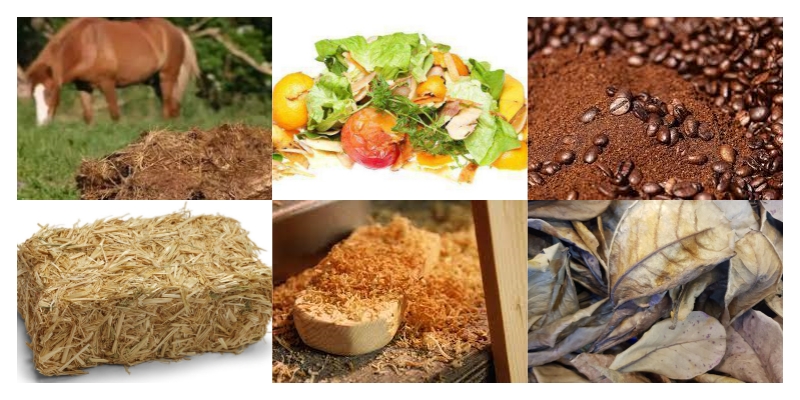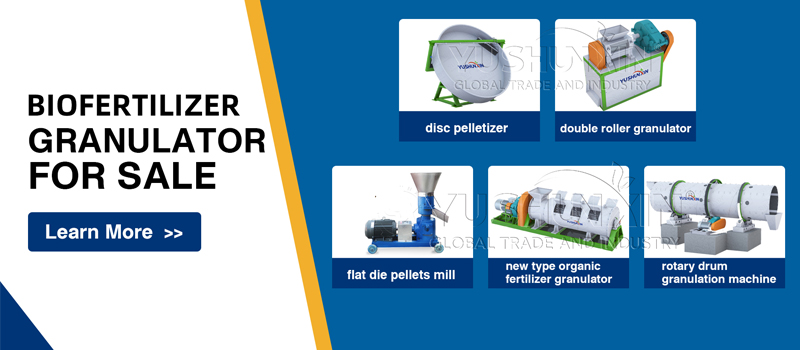Carbon-based fertilizer production from chicken manure has become an effective solution to manage poultry waste while improving soil health. Many fertilizer producers search for efficient methods to transform raw chicken dung into stable and marketable fertilizer products. The whole procedure involves several steps, including raw material selection, crushing, carbonization, granulating, drying, and packing. Among these stages, the granulation process plays a central role because it turns powdered or semi-powdery chicken manure-based carbon material into uniform fertilizer granules or pellets. To understand how granulating equipment aids this process, it is important to first consider the raw material sources, then focus on the features of granulating machinery, and finally evaluate how such equipment ensures smooth production of carbon-based fertilizer.
What Raw Materials Are Suitable for Carbon-Based Fertilizer Production from Chicken Manure?
The foundation of making carbon-based fertilizer lies in the proper preparation of raw materials. Chicken manure itself provides abundant organic matter, nitrogen, and micro-nutrients, but it usually contains excessive moisture and needs pre-treatment. Farmers and fertilizer manufacturers often mix powdered chicken dung with auxiliary raw materials, such as crop straw, rice husks, sawdust, or other carbon-rich residues. This mixture enhances the quality of carbon fertilizer by balancing the carbon-to-nitrogen ratio.
During the procedure, composting machinery helps ferment chicken dung and reduce pathogens. After composting, the semi-dry material turns into a powdery substance suitable for carbonization. Carbonization equipment, such as a furnace, further processes these materials into biochar or carbonized powder. When chicken manure-based char mixes with other powdered agricultural residues, the blend becomes a stable base for carbon-based fertilizer production. This stage ensures that the following steps of grinding, granulating, and pelletizing can proceed with consistent quality.

How Does Granulating Machinery Improve the Processing of Carbon-Based Fertilizer?
Granulation technology directly determines the shape, strength, and market value of carbon-based fertilizer. Powder or powdery chicken manure-based carbon material cannot be packaged or transported efficiently because of dust problems and low density. Granulating machinery solves this problem by pressing, rolling, or agglomerating the carbon fertilizer powder into granules, pellets, or particles of uniform size.
Different types of granulators serve diverse production needs. A disc granulator uses rotating discs to form carbon-based fertilizer granules through agglomeration. A flat die granulator or pelletizer presses the chicken manure-based carbon powder into cylindrical pellets, which suit small and medium-scale production. A double roller extrusion granulator forms uniform particles without drying, making it energy-efficient for some facilities. A drum granulator or new type organic fertilizer granulator handles larger capacities for industrial-scale production. These machines not only improve the appearance of the final granules but also enhance storage stability, application efficiency, and transportation convenience.

In addition, fertilizer production lines often combine granulating machines with supporting equipment. A crushing machine, such as a carbon fertilizer grinder, helps achieve a fine powder before pellet making. A drying machine reduces the moisture content of granules to reach a stable condition. Finally, an automatic packing machine ensures that carbon-based fertilizer granules arrive in the market in standardized bags. Together, these machines create a complete and reliable processing chain, turning chicken dung into valuable carbon-based fertilizer products.
Why Does Granulation Ensure the Success of Chicken Manure Carbon Fertilizer Production?
The granulating stage connects raw material preparation with commercial fertilizer packaging. Without granulation, powdered chicken manure-based carbon materials remain unstable and inconvenient for long-term storage. Granules or pellets, however, guarantee higher bulk density, lower moisture absorption, and more consistent nutrient release in soil. Buyers and users recognize the difference in handling when fertilizer comes in uniform particles.
For producers, efficient granulating equipment reduces production costs by minimizing powder loss and improving throughput. The combination of compost machines for pretreatment, carbonization equipment for biochar making, and reliable granulators for particle formation establishes a smooth and professional production procedure. Each machine contributes to the overall quality, but the granulator defines the final product shape that enters the market.
Conclusion
In summary, carbon-based fertilizer production from chicken dung depends on three key aspects: the selection of suitable raw materials, the conversion of these materials into stable carbonized powder, and the transformation of that powder into uniform pellets or granules through granulating machinery. Supporting equipment like compost machines, grinders, dryers, and packing machines complete the entire process. Granulation, however, remains the decisive step that bridges preparation and commercialization.
For fertilizer manufacturers planning to invest in efficient equipment, cooperation with a professional supplier ensures reliable procedure design and machine performance. A professional fertilizer equipment manufacturer – Yushunxin – provides advanced granulators, carbonization furnaces, and supporting machinery to help producers turn chicken manure into high-quality carbon-based fertilizer granules with stable performance and market competitiveness. You can visit: https://www.charbasedfertilizermachine.com/product/chicken-dung-and-biochar-as-fertilizer/